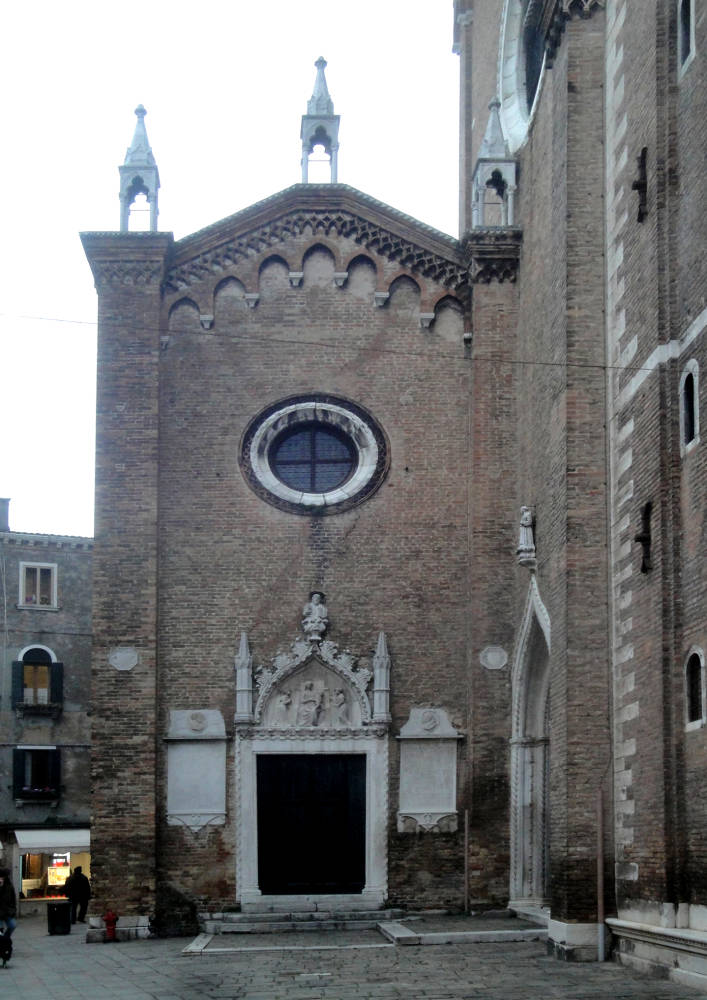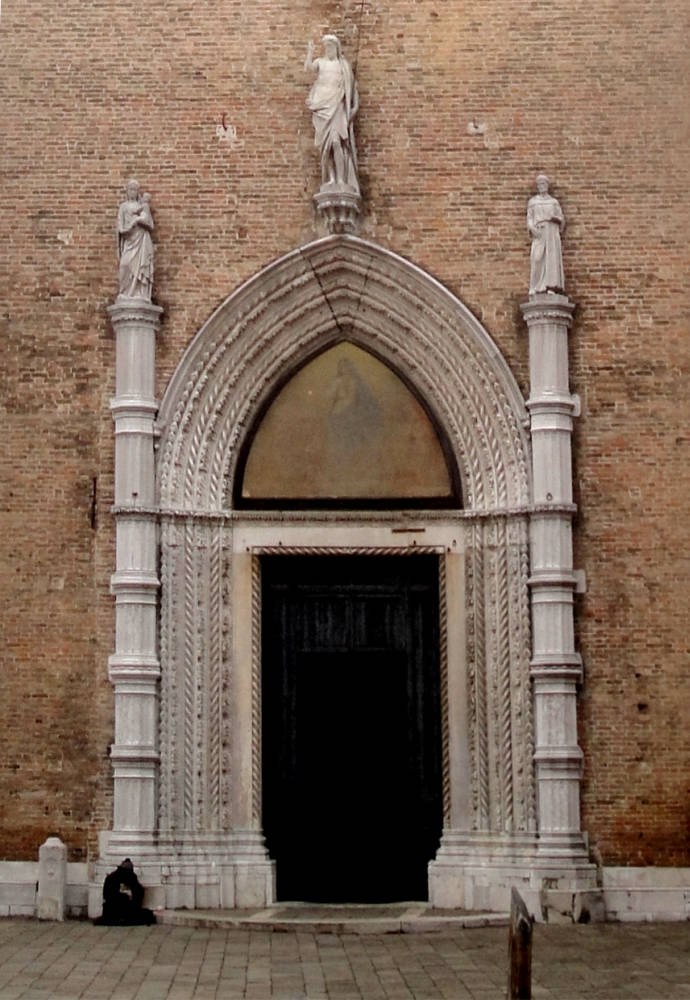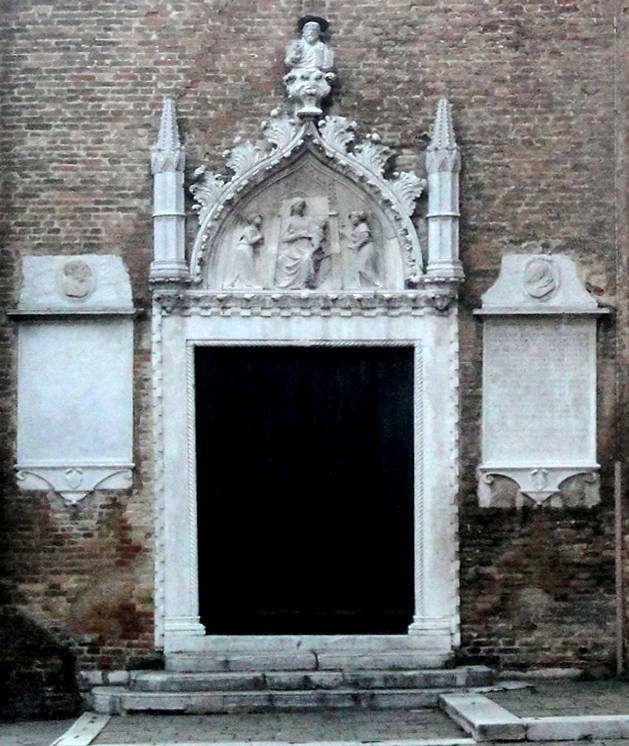Click on images to enlarge them.


In the third volume of The Stones of Venice Ruskin’s tourist guide to the city’s architecture explains that this church was “founded in 1250, and continued at various subsequent periods. The apse and adjoining chapels are the earliest portions, and their traceries . . . [are] the origin of those of the Ducal Palace. The best view of the apse, which is a very noble example of Italian Gothic, is from the door of the Scuola di San Rocco. The doors of the church are all later than any other portion of it, very elaborate Renaissance Gothic. The interior is good Gothic, but not interesting, except in its monuments” (11.379).
He then turns to the tombs of famous Venetians in the interior of the Frari, concentrating upon their style and workmanship as he mixes praise with invective: “the traveller ought to notice carefully that of Pietro Bernardo, a first-rate example of Renaissance work; nothing can be more detestable or mindless in general design, or more beautiful in execution. Examine especially the griffins, fixed in admiration of bouquets at the bottom. The fruit and flowers which arrest the attention of the griffins may well arrest the traveller’s also; nothing can be finer of their kind. The tomb of Canova, by Canova, cannot be missed; consummate in science, intolerable in affectation, ridiculous in conception, null and void to the uttermost in invention and feeling. The equestrian statue of Paolo Savelli is spirited; the monument of the Beato Pacifico, a curious example of Renaissance Gothic with wild crockets (all in terra cotta). There are several good Vivarinis in the church, but its chief pictorial treasure is the John Bellini in the sacristy, the most finished and delicate example of the master in Venice” (11.379).
One of Ruskin’s characteristic self-corrective notes added in 1877 follows. There he admits that he forgot the presence of the Pesaro Titian, a votive picture over the altar in the Pesaro family’s chapel, which believed to be “the best Titian in Venice; the powers of portraiture and disciplined composition, shown in it, placing it far above the showy masses of commonplace cherubs and merely picturesque men, in the Assumption” (11.379-80n).


More of Ruskin's Venice
- St. Mark’s Cathedral
- The Palazzo Ducale, Venice
- The Scuola de San Rocco
- On the Grand Canal
- Leaving the Grand Canal
- On the way to Venice from the mainland
- Venice: Details and Corners
Photographs 2019 and 2020. [You may use these images without prior permission for any scholarly or educational purpose as long as you (1) credit the photographer and (2) link your document to this URL in a web document or cite the Victorian Web in a print one.]
Bibliography
Ruskin, John. The Works. Ed. E. T. Cook and Alexander Wedderburn. “The Library Edition.” 39 vols. London: George Allen, 1903-1912.
Wurman, Richard Saul [and Patricia Schultz]. Florence Venice Milan Access. New York: HarperCollins, n.d.
� �
Last Modified 30 March 2020